How to care for an apricot in spring: what is included in spring care - pruning, feeding, processing
Spring. The apricot is coming out of hibernation, which means that soon it will need a little of your attention. Obviously, if you want to get regular harvests, then the tree must develop properly and be healthy, in other words, it needs to be properly cared for in the spring.
Next, you will learn how to care for an apricot in spring so that you can harvest a decent harvest this season and enjoy juicy southern fruits in summer.
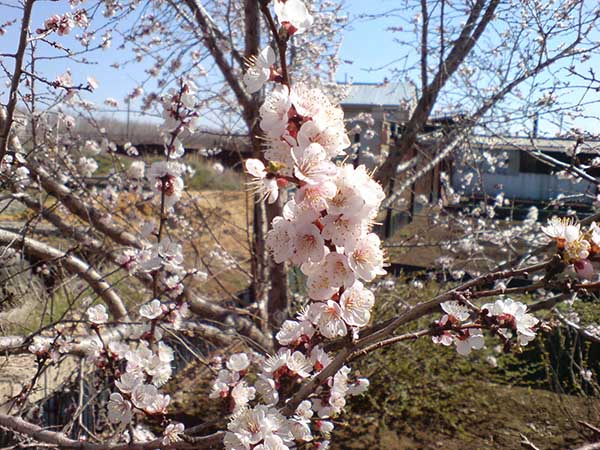
Content
How to care for an apricot in spring: basic agrotechnical measures
Removing protective cover from young seedlings
As a rule, to protect a young apricot seedling from rodents (mice and hares), as well as from sunburn (i.e. instead of whitewashing), in the first few years (until the bark hardens), the lower part of the trunk is wrapped in a special nonwoven material. So, when a positive temperature is established, the snow will melt and the soil will completely thaw (freeze), the protective shelter can be removed.
However! There is no need to rush if you used the correct breathable (non-woven) fabric - nothing will stick.
If you do this ahead of time, then the delicate bark of young seedlings can get sunburn (cracked).
Whitewash
Worth knowing! The main and most important whitewashing of all trees in the garden is carried out in the fall.
In early spring (in February-March) they whitewash only if for some reason you did not do it in the fall, or the whitewash was washed off or badly peeled off during the winter. Therefore, it is also called repeated or renewing.
By the way! The site has a detailed article about when and how to whiten trees in the garden (including apricots).

Spring pruning
Early spring is the best time to prune apricots. In autumn, only pruning of more frost-resistant crops, the same pome crops (for example, apple trees), although it is optimal to cut them in the spring.
So, as for pruning apricots, then in the spring you need continue to form the crown of young trees, and adults (old trees) - to conduct another rejuvenation procedure... It is also recommended to conduct sanitary pruningwho did not survive the winter (broke, froze out).
Important! How exactly to conduct shaping and rejuvenating apricot pruning read here.
Top dressing
Timely application of fertilizers under apricot trees will promote more active growth of their shoots and a set of green mass, and most importantly, abundant fruiting.
Since apricot is a stone fruit culture (calcium is needed to form a stone), do not forget to monitor the acidity of the soil (Apricot prefers neutral or even slightly alkaline but not acidic!) and, if necessary, do calcium supplements.
In general, the apricot feeding scheme is standard for all fruit trees:
- in early spring (can still be in the snow) - pure nitrogen (ammonium nitrate) or a complex nitrogen-phosphorus-potassium fertilizing (for example, nitroammofoska), organic fertilizers - infusion of mullein, bird droppings;
- before flowering - potassium-phosphorus (more potassium);
- during flowering (under adverse weather conditions) - boron (on a leaf);
- after flowering and the formation of ovaries - potassium-phosphorus (more potassium) + trace elements (manganese, iron);
- after fruiting (in autumn) - phosphorus-potassium fertilizing (superphosphate + potassium sulfate or potassium monophosphate).
By the way! About when and how to feed apricots in spring and summer is described in detailin this article about feeding cherries (for apricot everything is the same, since both crops are stone fruits).
Watering, loosening and mulching
Apricot is considered to be a fairly drought-resistant crop (after all, it is a southern plant), therefore, in the spring months, as a rule, it does not need additional moisture (thawed is enough). Another thing is, if the winter was dry, then it should be watered before flowering. But when the apricot blooms and its fruits are tied, it will be simply necessary to water it more than once.
It is advisable to periodically loosen the apricot trunk circle and weed it from weeds. At the same time, it is possible to loosen to a depth of 10-15 cm (half-bayonet of a shovel).
It is also very good to mulch the trunk circle with peat, sawdust, compost or humus, then the moisture will retain better (it will not evaporate longer). Only do not pour mulch close to the trunk: this can cause the bark to dry out.
Advice! Loosen before watering and then mulch the tree circle.
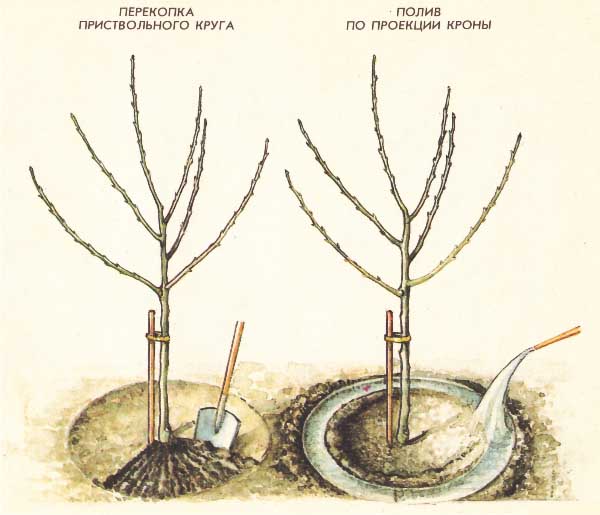
Treatment against diseases and pests
Apricots are susceptible to many fungal diseases and pests. In order to prevent their development, it is necessary to timely carry out complex protective and therapeutic treatments of apricot from diseases and pests in spring, summer and autumn.
- Most harmful illness apricot is scab stone fruits, moniliosis (monilial burn, fruit rot) and clasterosporium disease (perforated spot). Fungicidal agents are used against diseases.
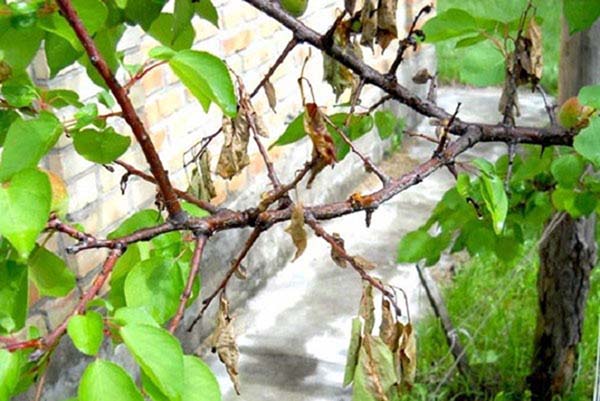
- The most dangerous pests apricot is plum aphid (during the growing season) and rodents (in winter and early spring), the culture also suffers from the attack of the plum sawfly, moth and spider mite. Spraying with insecticides (+ acaricides against mites) is carried out against pests.

How to protect apricots from diseases and pests, when and how to spray trees?
- The first processing is carried out even on bare branches (trees) -early spring eradication spraying.
- Then several sprays are carried out at certain stages of culture development ("green cone", "pink bud", "pea-sized ovary").
Advice! The site already has detailed material aboutwhen, how and what to treat fruit trees (including apricots) from diseases and pests in spring.
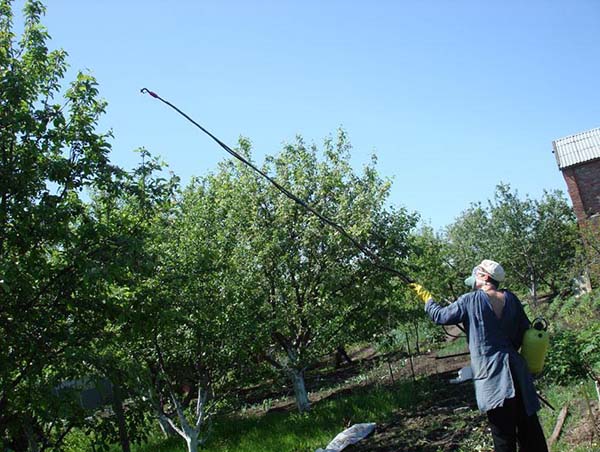
What other spring events can be held in spring withapricot trees
Spring grafting
If for some reason you are not satisfied with the variety or you want to plant a varietal apricot in the wild (for example, grown from bone), then it is not necessary to buy a new seedling: it is much more interesting to try the vaccination procedure. There are quite enough methods (there are many, and they are diverse!), And spring is perhaps the best time for this garden operation.
By the way! The site already has an article about how to plant apricot.
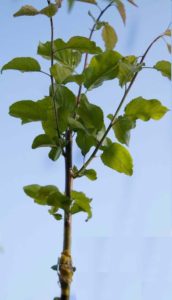
By the way! If the bark of your young apricot seedling is seriously damaged by rodents (mice or hares) in winter, so to speak, gnawed with a ring, then in order to save the tree, you can perform the saving grafting of apricot with a bridge.
Planting and transplanting
Of course, in the spring you can plant a new apricot seedling or transplant the tree to another place (always with a lump of earth).
By the way! About, how to plant an apricot in spring — read here.
Well, that's the whole list of spring apricot care works, which, in general, is suitable for the care of all fruit trees. Do not be lazy, take care of your apricot trees, and then they will surely thank you with large and tasty fruits. Good luck!


Everything is new for me - thanks!
I also read a good article. Written simply and in an easily digestible-ha bent form. In general, a site with a good search for trees, shrubs and their treatments.